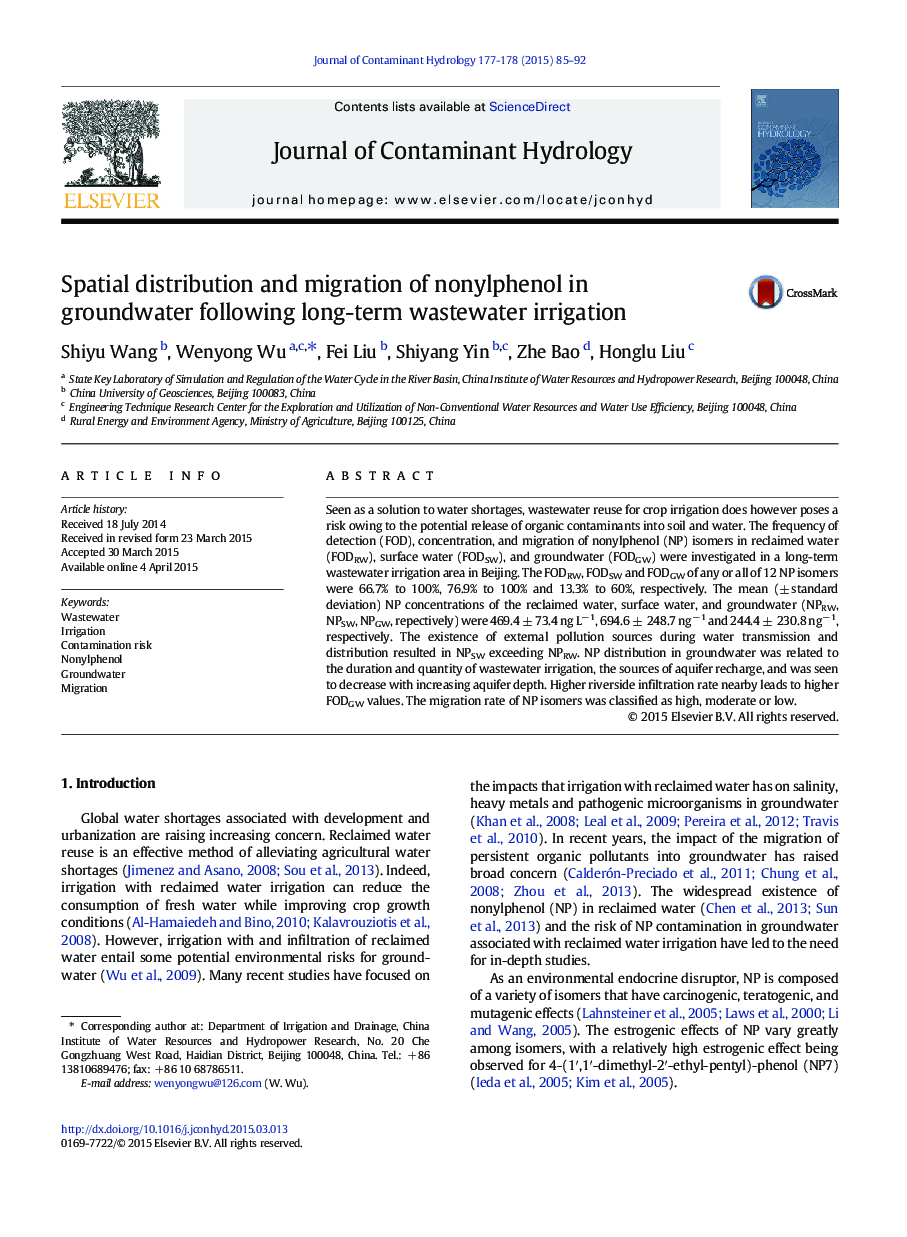| Article ID | Journal | Published Year | Pages | File Type |
|---|---|---|---|---|
| 4546439 | Journal of Contaminant Hydrology | 2015 | 8 Pages |
•Groundwater NP distribution resulted from application load of wastewater irrigation.•The migration rate of NP isomers was classified as high, moderate or low.•The groundwater NP decreased with increasing aquifer depth.•The “old water” aquifers were not contaminated by NP.
Seen as a solution to water shortages, wastewater reuse for crop irrigation does however poses a risk owing to the potential release of organic contaminants into soil and water. The frequency of detection (FOD), concentration, and migration of nonylphenol (NP) isomers in reclaimed water (FODRW), surface water (FODSW), and groundwater (FODGW) were investigated in a long-term wastewater irrigation area in Beijing. The FODRW, FODSW and FODGW of any or all of 12 NP isomers were 66.7% to 100%, 76.9% to 100% and 13.3% to 60%, respectively. The mean (± standard deviation) NP concentrations of the reclaimed water, surface water, and groundwater (NPRW, NPSW, NPGW, repectively) were 469.4 ± 73.4 ng L− 1, 694.6 ± 248.7 ng− 1 and 244.4 ± 230.8 ng− 1, respectively. The existence of external pollution sources during water transmission and distribution resulted in NPSW exceeding NPRW. NP distribution in groundwater was related to the duration and quantity of wastewater irrigation, the sources of aquifer recharge, and was seen to decrease with increasing aquifer depth. Higher riverside infiltration rate nearby leads to higher FODGW values. The migration rate of NP isomers was classified as high, moderate or low.
